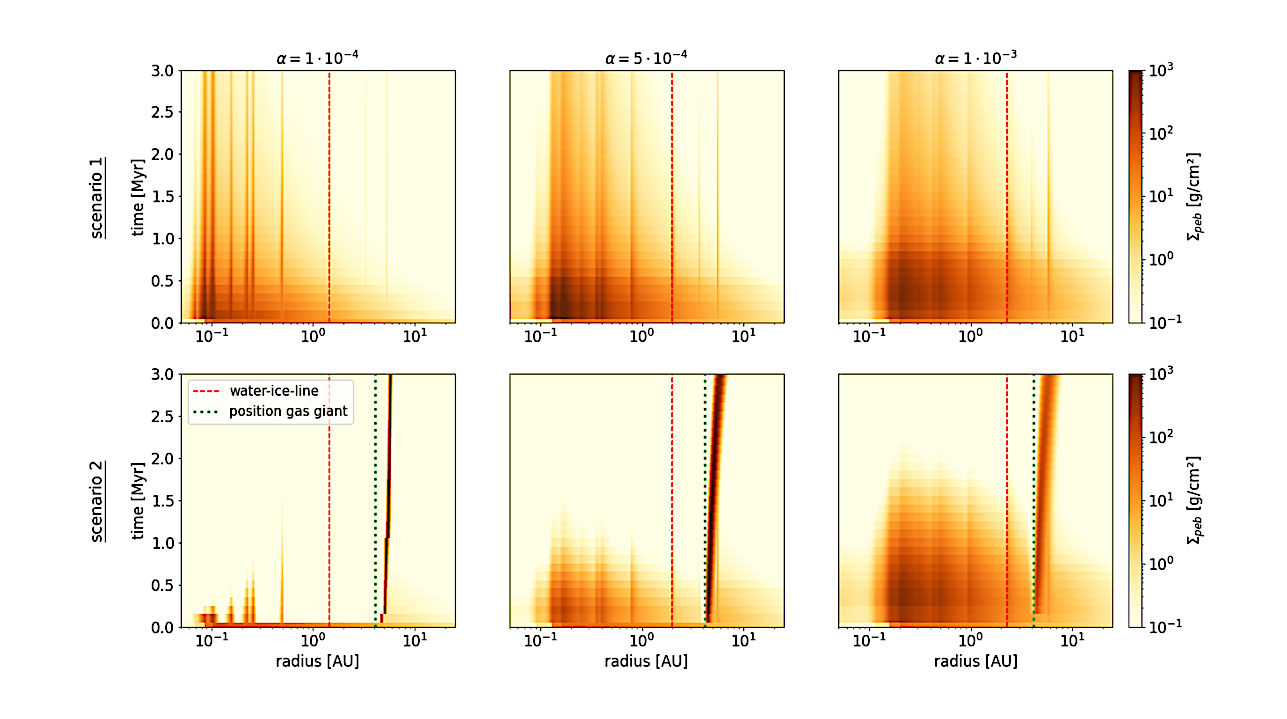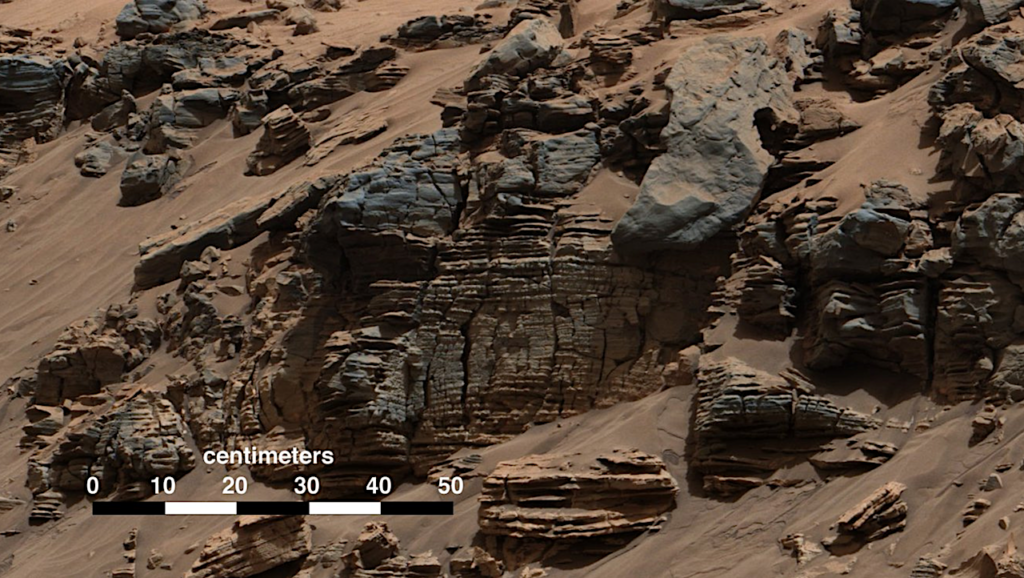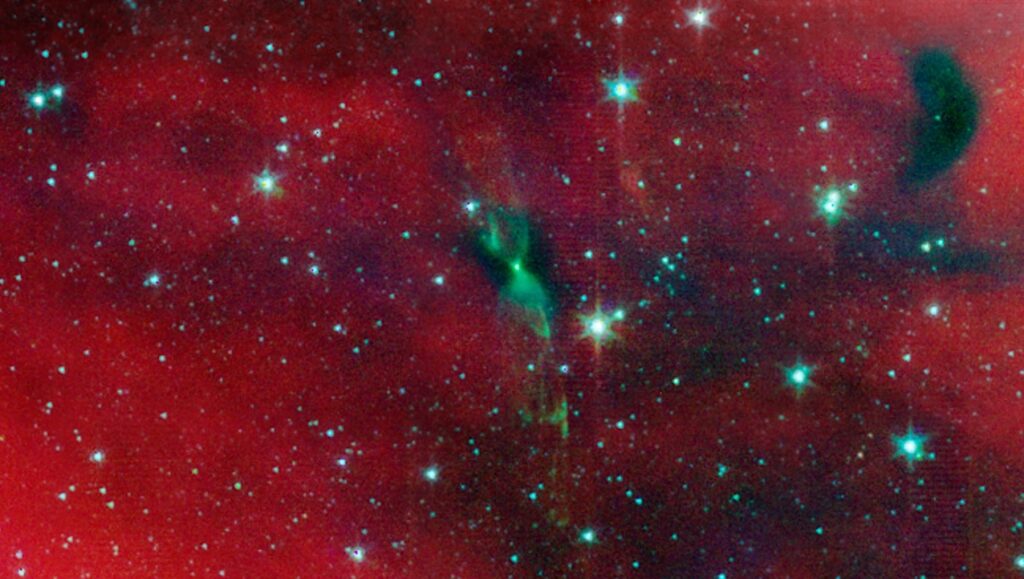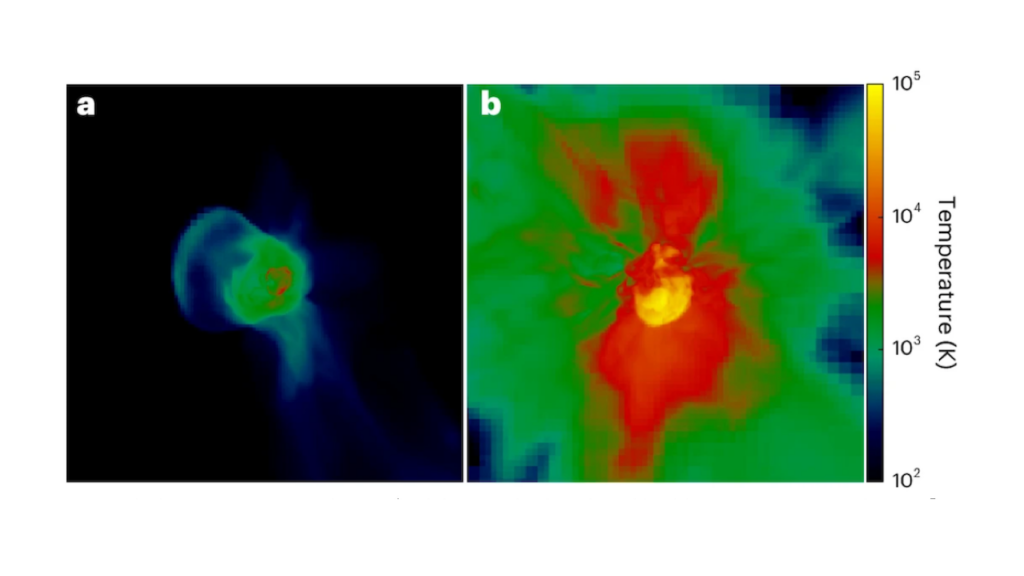Constraining The Formation History Of The HAT-P-11 System By Atmospheric Abundances

The chemical fingerprint of a planet reveals information about its formation history regarding when and where it formed. The water content of a planet can help to constrain its formation pathway: If the planet formed in the outer regions of the disk and migrated inward, it will be water-rich due to the accretion of water-ice-rich solids.
Conversely, formation in the inner disk, where water-ice is not available, will result in a smaller atmospheric water content due to the limited accretion of water vapor.
This process complicates with the presence of gap-opening giant planets. A gas giant exerts a pressure bump exterior to its orbit, preventing the further influx of pebbles into the inner system, resulting in a water-poor environment. The different formation scenarios can help to constrain the formation of the HAT-P-11 system, which contains an inner sub-Neptune with a mass of 23.4 M⊕ and substellar water abundances (XH2O≈0.11), as well as an outer giant planet orbiting exterior to the water-ice line. Our planet formation model encompasses planetary growth through pebble and gas accretion, along with a pebble drift and evaporation module that enables us to track the chemical composition of the disk and the planets.
We find that the presence of the gas giant is necessary to block water-ice-rich material, resulting in a substellar water content for the inner sub-Neptune. If the giant planet forms too early, not enough solid material can enter the inner disk regions, preventing the efficient growth of the inner planet. This highlights the importance of the timing of giant planet formation to explain the inner system structure.
Our simulations predict a roughly stellar C/O ratio with superstellar C/H and O/H for HAT-P-11b, providing constraints for future observations that are essential for gaining a more detailed understanding of its formation.
Lena Chatziastros, Bertram Bitsch, Aaron David Schneider
Comments: 14 pages, accepted by A&A
Subjects: Earth and Planetary Astrophysics (astro-ph.EP)
Cite as: arXiv:2310.12797 [astro-ph.EP] (or arXiv:2310.12797v1 [astro-ph.EP] for this version)
Submission history
From: Bertram Bitsch [view email]
[v1] Thu, 19 Oct 2023 14:52:55 UTC (1,623 KB)
https://arxiv.org/abs/2310.12797
Astrobiology, Astrochemistry








